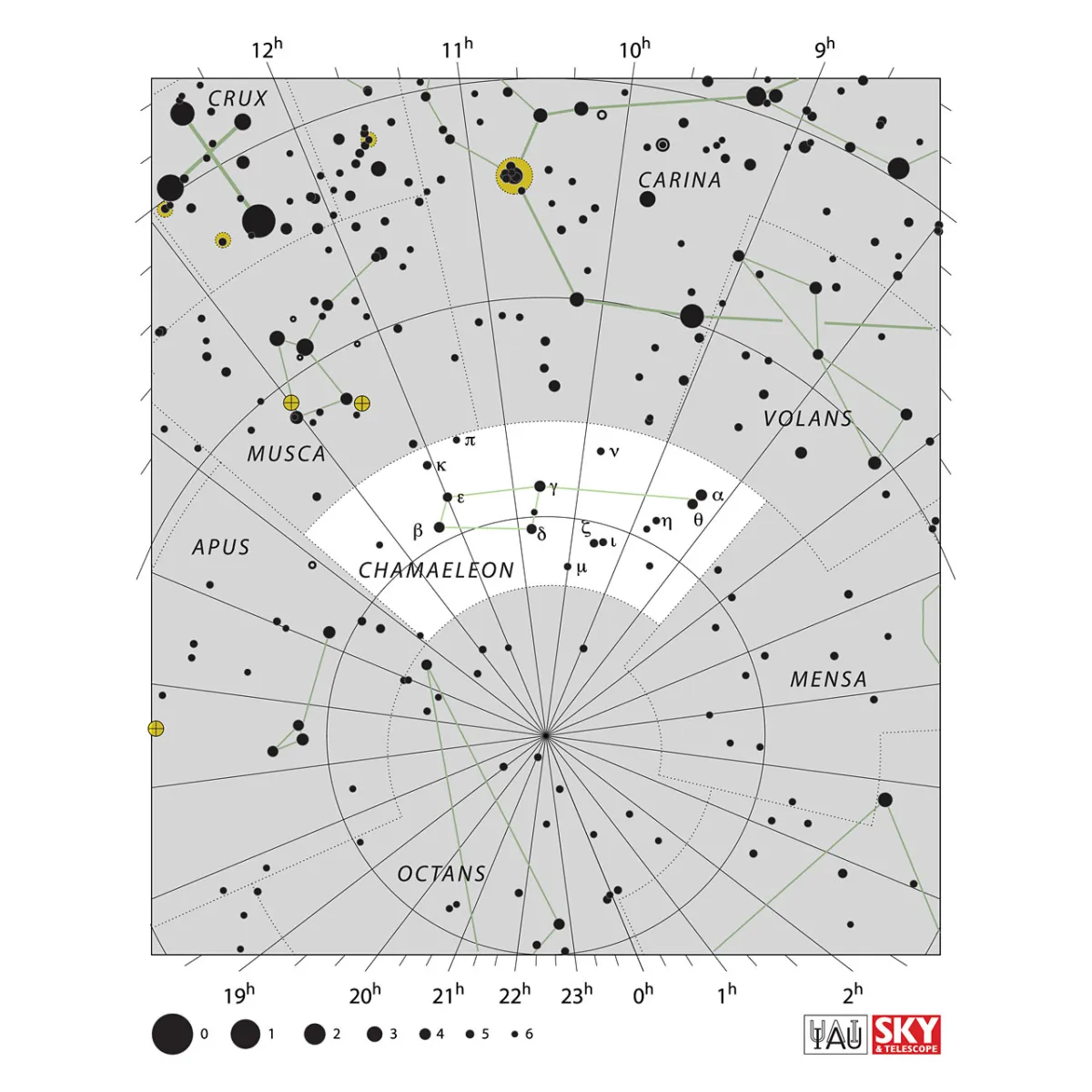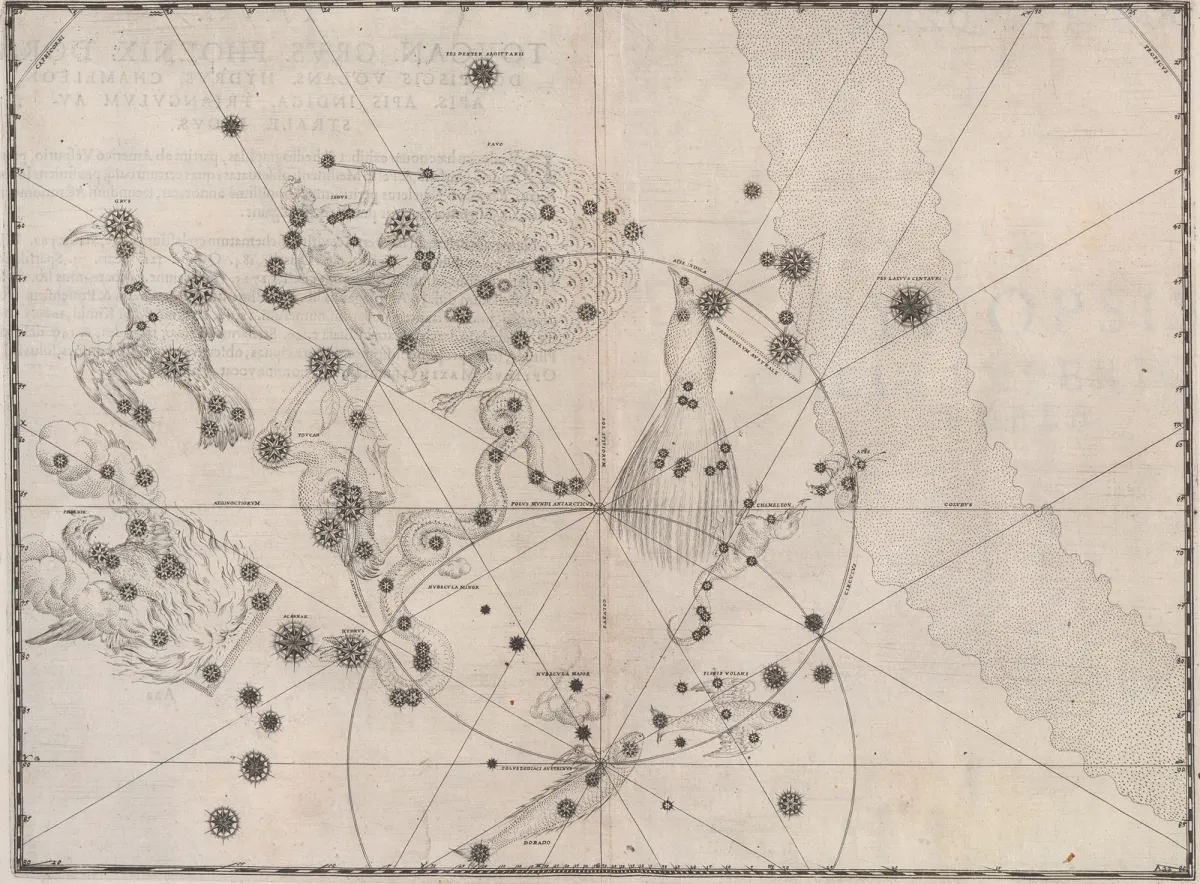Constellation Chamaeleon (Chameleon)

Properties
Chameleon is in inconspicuous constellation near the South Pole, south of the bright star Miaplacidus (beta Carinae). The stars are faint and hardly reach 4th magnitude. They roughly form the figure of an elongated diamond. The constellation covers an area of only 132 square degrees. The centre culminates around midnight on February 28th. [9, 15]
| IAU Name | Chamaeleon |
| IAU Genitive | Chamaeleontis |
| IAU Abbr. | Cha |
| English Name | Chameleon |
| Culmination at local midnight | 25 February |
| Season (Latitude +0.0°) | November … July |
| Right Ascension (J2000.0) | 07h 26m 37s … 13h 56m 27s |
| Declination (J2000.0) | -83° 07' 12" … -75° 17' 24" |
| Area | 132 deg2 |
| Neighbours (N↻) | Car, Vol, Men, Oct, Aps, Mus |
Deep-Sky Object Descriptions
Catalogues

History
This constellation was introduced in 1603 by Johann Bayer in his Uranometria, the atlas of the entire starry sky. It represents the reptile of the same name, which is known for its ability to adapt the skin colour to its surroundings. [7]